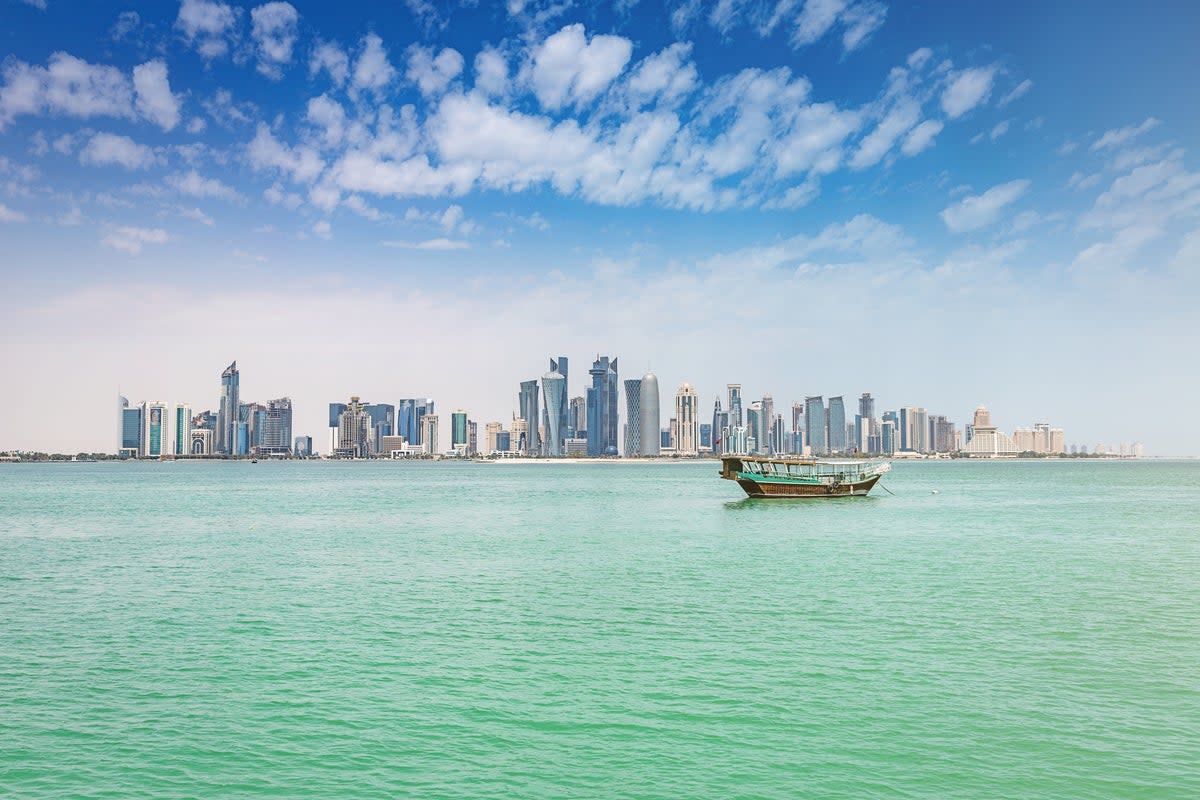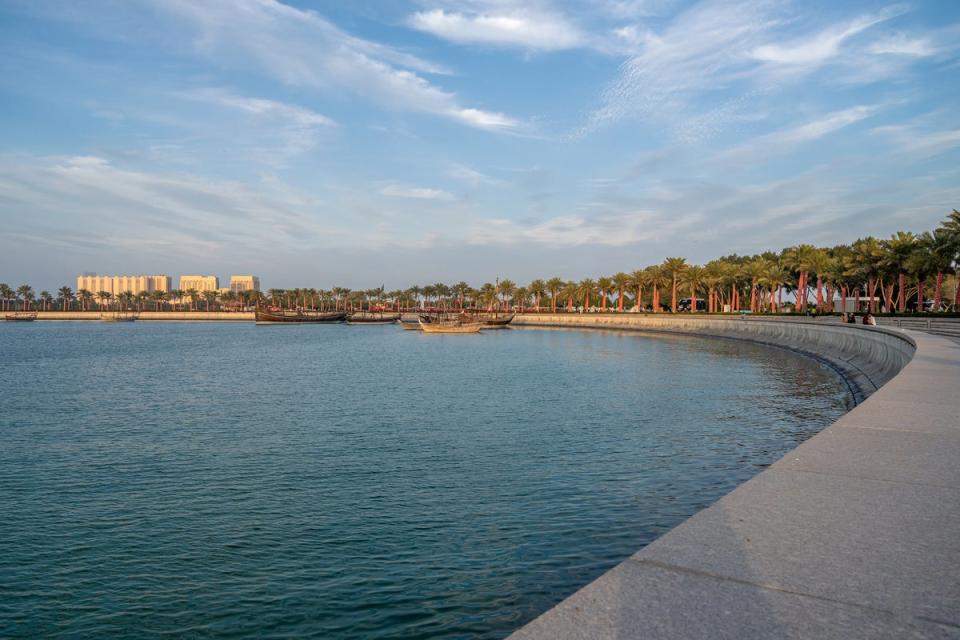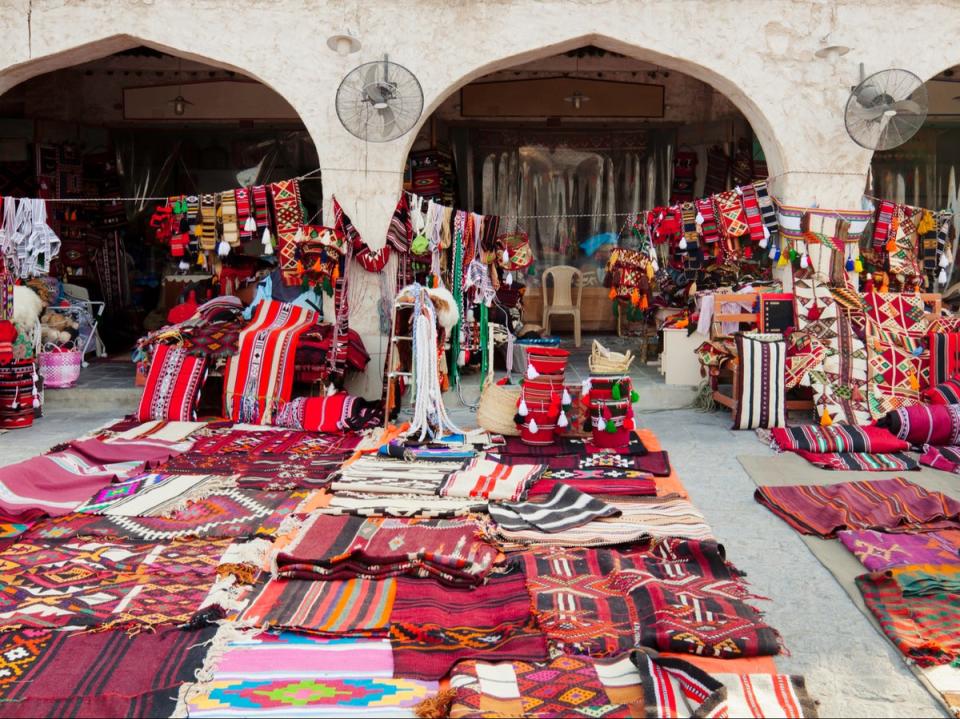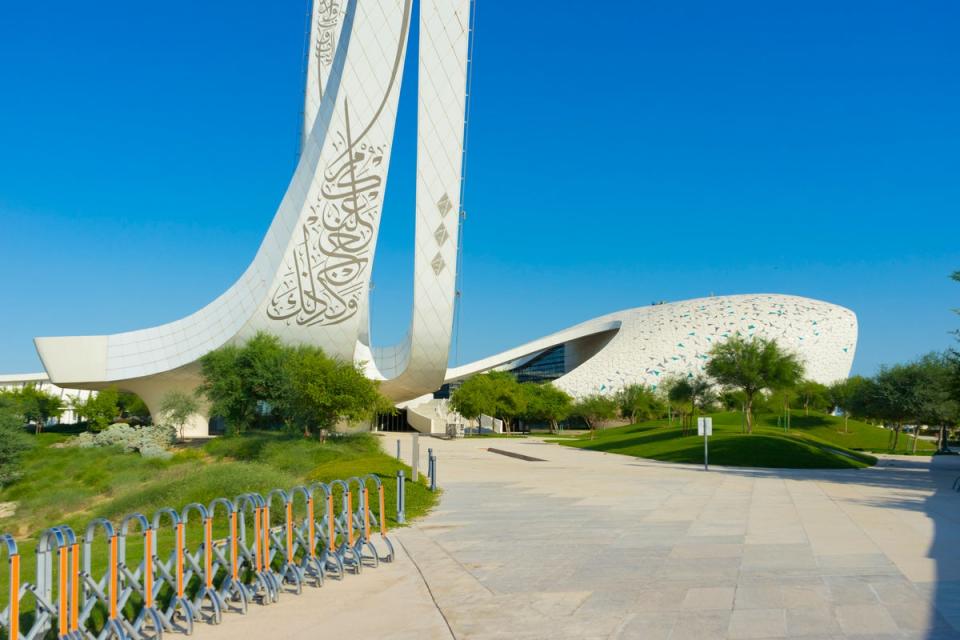Doha city guide: Best things to do and where to stay in Qatar’s capital

It may have gained worldwide fame as host of the 2022 Fifa World Cup, but Qatar is still not on most people’s radars when it comes to travel. That said, things are slowly starting to change. More and more cruise ships are docking at the new terminal in Doha’s revamped Old Port, and hearing a foreign language spoken in the souk no longer automatically means it was uttered by an expat resident.
The capital, Doha, has transformed itself into a veritable art hub, with a dozen or so installations in the airport alone, and many more dotted throughout the city (and further out across the country). The museums here have won international plaudits, and the sheer choice of accommodation and restaurants – serving local cuisine and international dishes – is dazzling. There is an ever-present juxtaposition of tradition and modernity almost everywhere. Futuristic architecture is embellished with calligraphy, steps from the design quarter Mshereib you’ll find a place where the tradition of falconry is alive and well (with sustainable hunting rules), and the country’s pearl heritage is a source of evident pride.
Visiting Doha allows you to experience the old traditions and culture, but also enjoy the contemporary advances, which exist side-by-side. As it evolves as a tourist destination, so too will the appeal of this tiny nation continue to grow.
Best time to visit
From February to May and October to December the temperatures reach mid-twenties and low thirties, with evening and nighttime temperatures in the mid to high 10s. It is warm but comfortable, and while there might be some rainfall in the winter months, it’s minimal (around 15mm).
Read more on Middle East travel:
Best things to do
Walk the Corniche

To get a good overview of the city, which stretches along the turquoise waters of horseshoe-shaped Doha Bay, walk the length of the Corniche. The 7km bayside road has a wide pedestrianised walkway, offering incredible views while connecting some of the main sights of the city. Start at the southern end, by the National Museum of Qatar. This Jean Nouvel-designed space is in the shape of a desert rose – a gypsum formation found locally – and tells the story of Qatar’s ancient and modern history.
Head on toward the IM Pei-designed Museum of Islamic Art, set in MIA Park, and then dive into Souq Waqif for an initial taster. Onward takes you past the Dhow Harbour, the Fifa World Cup 2022 symbol on its own island, to the modern West Bay, where you’ll find many of Doha’s hotels and businesses.
Get lost in Souq Waqif
Souq Waqif is the city’s old commercial centre, a traditional bazaar with a myriad of tiny lanes in which to get utterly lost. There are cafes and restaurants here, but it’s the stalls selling gold jewellery, bales of cloth, saucepans big enough to fit a camel, and aromatic spices that call out to locals as well as visitors. Within it, there’s a specific Falcon Souq with a Falcon Hospital, both dedicated to the national bird and traditional sport of falconry. The stables of the camels from the Emir’s special police force, who you can see riding in caravan formation early in the morning along the Corniche, are open to the public, and lie close to separate stables holding some hauntingly beautiful Arabian thoroughbred horses. Schedule a few hours of losing yourself in Qatar’s heritage here.

Go art-spotting
Qatar spends serious money on art installations. Along the Corniche alone, you can find Jeff Koons’ Dugong, Richard Serra’s 7 in MIA Park, and Cesar Baldaccini’s Le Pouce in Souq Waqif. Outside of the Sidra Women’s Hospital, a large 14-piece Damien Hirst installation called The Miraculous Journey chronicles the development of a foetus, while some 70km outside of Doha, in the middle of the rocky Zekreet desert miles from anywhere, Richard Serra’s East-West, West-East stands tall, and Olafur Eliasson’s Shadows Travelling on the Sea of the Day transfixes those who drive north near Zubara Fort, a Unesco site.
Dip your toes in the sand
Just outside the city limits, leave modernity behind to find yourself in a desert environment that offers a very different impression of Qatar. From the Singing Dunes, horse-shoe-shaped dunes that seem to “sing” when you slide down them, to the Inland Sea, where sands meet the water and flamingos wade, to the eerie rocky outcrops in Zekreet, Qatar’s desert is as varied as the architecture in the city. A day tour down to the Inland Sea should definitely be on the to-do list.
Where to stay
Within Souq Waqif, there are several budget-friendly properties making up Souq Waqif Boutique Hotels by Tivoli. Dotted throughout the souk, the separate small hotels offer stylish rooms. Most sights are within walking distance. Stay at Al Mirqab Boutique Hotel for its proximity to the camels and falcons, and a chance to spot the Emiri police riding out in the morning.
Right on the Corniche, located in the former Ministry of the Interior building, is one of the latest additions to the city, The Ned Doha. A stunning reimagining of a drab 1970s concrete complex, The Ned offers one of the prettiest pools in Doha, and the best views. A popular spot for Friday brunch by the pool, this hotel is hip and convenient at the same time.
Paris has the Eiffel Tower but here you’ll find the Katara Tower, an iconic addition to the skyline in Lusail, north of the city centre. The near-circular tower houses two luxury hotels. One is the all-suites Raffles Doha, with designs by Marcel Wanders that give a chic sense of whimsy. There is a host of bars and restaurants, including Alba by Enrico Crippa, which promises a culinary journey to the Italian region of Piedmont.
The other is the more family-orientated Fairmont Doha. Gaze on the Arabian Gulf from rooms (there are more than 300) and terraces, plus a choice five restaurants, 24-hour in-room dining, exquisite afternoon teas, and even a private island. Expect gold trim, marble and soft leather across the spaces.
Where to eat
Head to Bayt Sharq for the best majboos and madrouba (rice and chicken dishes) in the lovely, traditional setting of a former private home. Or, if you have a slightly higher budget, try Jiwan, lead by Michelin-star chef Alain Ducasse. It’s inside the National Museum of Qatar, with superb views from the terrace. Both restaurants are dry, so don’t expect alcohol. For superb Italian food, try Alba, with Michelin-starred chef Enrico Crippa at the helm, or head to the world’s largest Nobu, set on its own peninsula in Doha Bay.
If you are in town on a Friday, head for brunch. One popular choice is B-lounge, where the food is Asian fusion, the terrace is breezy, and the vibe is chilled.
Where to drink
Alcohol, while freely available in most international hotels in Doha, is pricey. So much so that if you want a night out bar hopping, you’d better budget for it, as a basic glass of wine starts from around £13, with cocktails costing upwards of £17. However, there is no shortage of great bars, from more budget-friendly sports bars such as the Belgian Café to the laid-back Monkey Tale mixology beach club bar.
There are several rooftop bars with great views at night, such as the Skyview Bar at La Cigale Hotel, or the Cuban-themed La Vista 55, which offers an affordable happy hour.
Where to shop
If you want designer labels, head straight to Place Vendôme, a spacious luxury mall complete with dancing fountain, or, if you prefer a bit of Venetian influence, Villaggio Mall offers gondola rides through its indoor canals. For eclectic shopping, Souq Waqif is great, but for good quality and truly unusual souvenirs, there’s no better spot than the museum store at the National Museum of Qatar.
Architectural highlight

Qatar has some big-name architecture, from a Zaha Hadid Architects football stadium to the quirky Burj Doha Tower in West Bay (designed by Jean Nouvel). But an absolute marvel which few visitors ever get to see is the Education City Mosque. Designed by Iraqi architect and calligrapher Taha al-Hiti, the minarets are anything but traditional, and the sleek white building is curved and covered in calligraphy that quotes from the Quran. You can get there by metro and take in the superb National Library of Qatar at the same time.
FAQs
What currency do I need?
Qatari riyals.
Should I tip?
There’s no obligation to tip in hotel restaurants but elsewhere 10 per cent is always appreciated.
What’s the time difference?
GMT+3.
How should I get around?
Taxis and Ubers are easy to get hold of but there is also a reliable, super-modern metro and tram system throughout the city, which also connects with the airport.
What’s the best view?
Not the highest viewpoint, but still one of the best views is found in MIA Park, behind the Museum of Islamic Art. At the very tip of it, you are surrounded by Doha Bay, with traditional dhows moored in front of the modern skyline.
Insider tip?
In Qatar, the weekend falls on Friday and Saturday, with most shops and facilities closed on Fridays until afternoon prayer, with everything opening again around 2pm. Also, make sure you know when the holy month of Ramadan falls (it changes each year). During the period, it’s illegal to eat or drink in public from dawn until sunset, with many restaurants and cafes closed.
Getting there
British Airways and Qatar Airways fly from London Heathrow to Doha.
Read our reviews of the best hotels in Dubai

 Yahoo News
Yahoo News 
